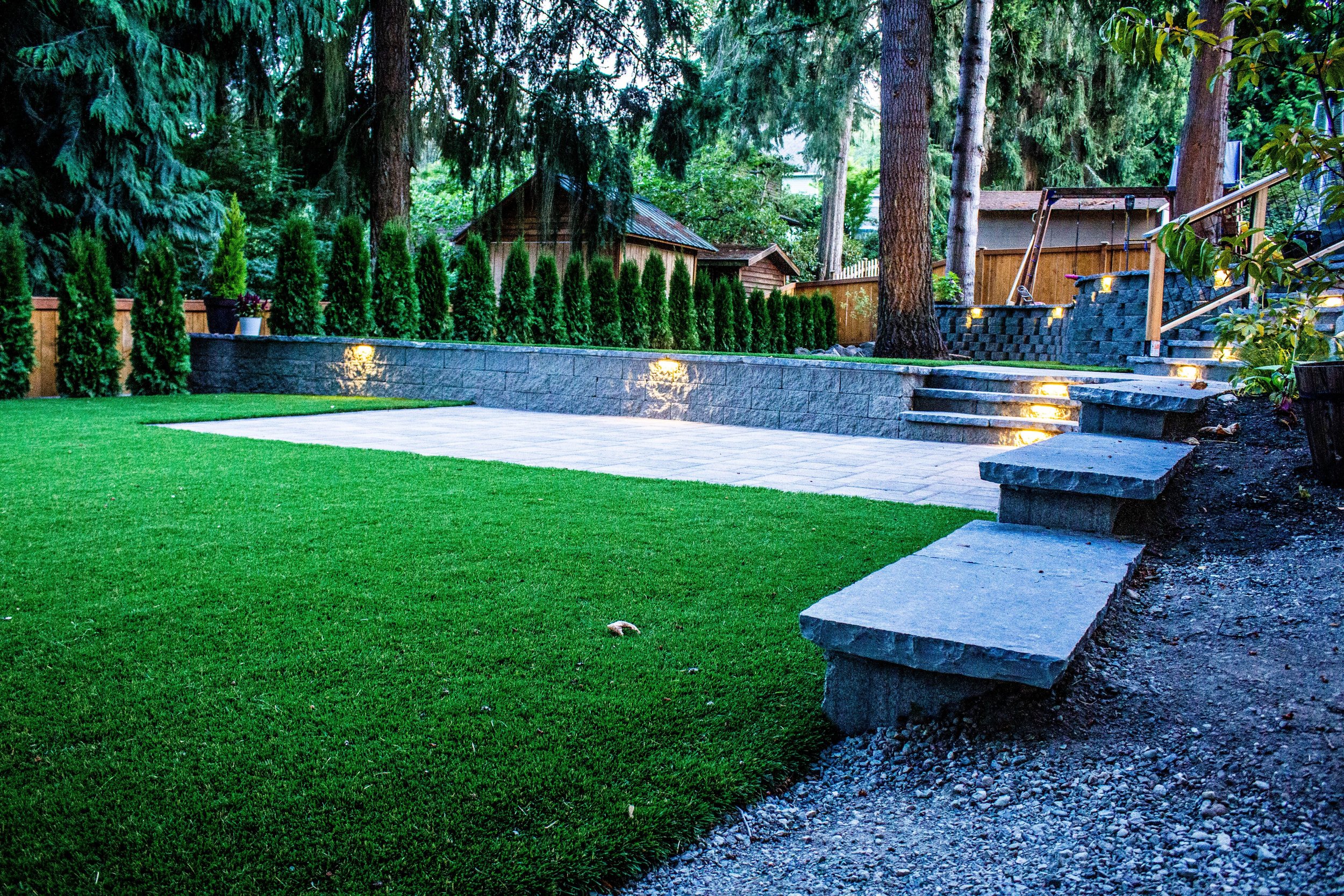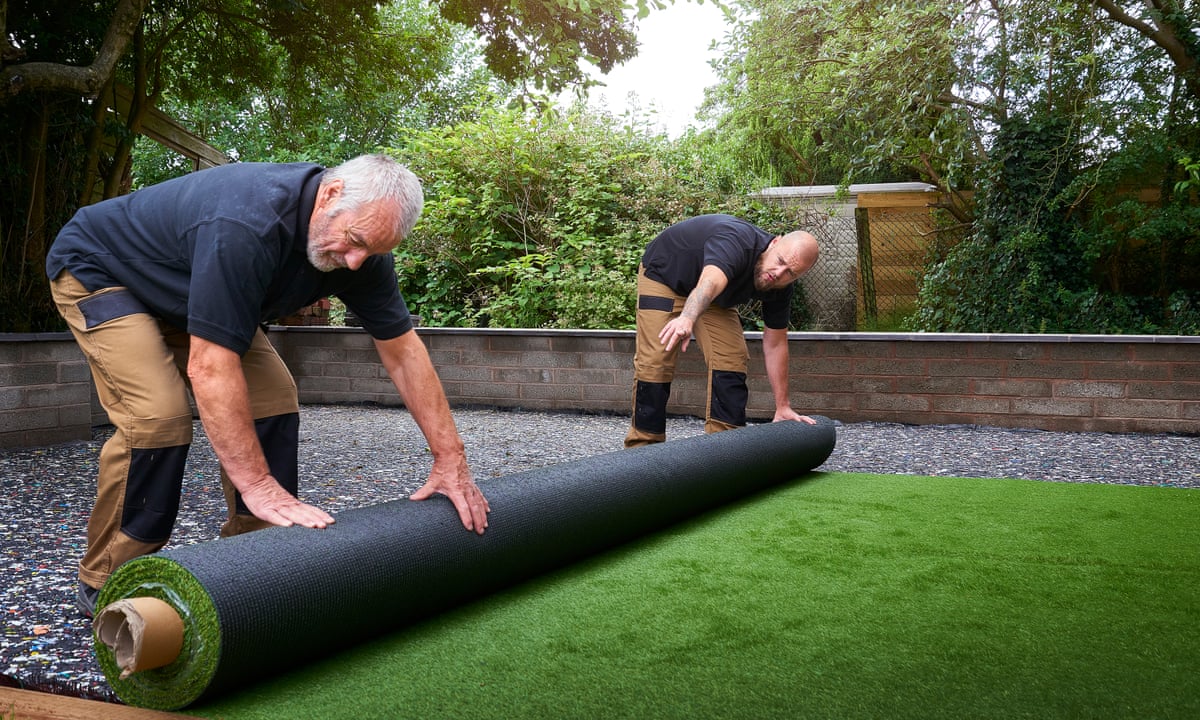See Why Homeowners Prefer Artificial Grass for Lasting Landscape Design Practices
As property owners increasingly prioritize sustainability in landscape design, artificial grass has actually emerged as an engaging alternative to standard yard. What remains to be discovered is the full range of advantages that synthetic grass can supply to property owners and the setting alike.
Water Conservation Perks
Among the most considerable benefits of artificial turf is its function in water preservation. Typical grass lawns need significant amounts of water to maintain their rich look, often causing overuse of neighborhood water sources, specifically in deserts. On the other hand, synthetic grass removes this need totally, as it does not require irrigation. This not only conserves water however also reduces the stress on municipal water supply, particularly during dry spell problems.
Moreover, the setup of synthetic turf can contribute to an extra sustainable landscape. Home owners can dramatically decrease their water costs, enabling for reallocation of sources to various other ecological campaigns or family uses. Furthermore, synthetic lawn is designed to endure different weather problems without the requirement for extra watering, making it an optimal choice for regions encountering water shortage.
The environmental benefits prolong beyond immediate water financial savings. By reducing water usage, synthetic lawn assists to mitigate the influences of climate adjustment, maintaining crucial ecological communities that are endangered by too much water extraction. As lasting landscaping techniques obtain traction, fabricated grass becomes an accountable selection for property owners looking for to produce environment-friendly outdoor areas.
Lowered Maintenance Initiatives
Synthetic grass significantly lowers maintenance efforts contrasted to typical yard lawns. With artificial lawn, home owners can get rid of the time-consuming tasks related to natural landscaping, such as mowing, feeding, and weeding. This not just conserves important time however additionally lowers physical labor, making lawn care easily accessible for people of all ages.
One of one of the most remarkable benefits is the lack of regular mowing. Traditional lawns need regular cutting to preserve a cosmetically pleasing elevation, whereas synthetic grass continues to be consistently lush without the need for cutting. Additionally, homeowners no more need to use plant foods or pesticides, which are often called for to maintain all-natural lawn healthy and balanced. This shift not only lightens the workload yet additionally advertises a neater, a lot more uniform appearance year-round.
Moreover, synthetic turf is resistant and long lasting, needing minimal maintenance beyond periodic cleaning and rinsing to remove particles. This ease of upkeep allows home owners to enjoy their outdoor rooms without the constant fear of upkeep, supplying more time for leisure and family members activities. Ultimately, the lowered maintenance initiatives related to synthetic grass make it an enticing choice for those looking for a low-maintenance, visually appealing landscape.

Ecological Impact Decrease
There is a growing acknowledgment of the environmental advantages connected with fabricated grass, particularly in regards to water preservation and minimized chemical use. Conventional grass require substantial quantities of water, particularly in drought-prone areas, resulting in raised strain on regional water sources. On the other hand, synthetic grass gets rid of the demand for irrigation, drastically decreasing water intake and advertising sustainability.
Additionally, traditional yard upkeep often includes the application of plant foods, herbicides, and pesticides, which can add to soil and water contamination. Man-made lawn mitigates this environmental risk by needing very little maintenance and essentially removing the need for damaging chemicals. This not only improves soil wellness however also safeguards local communities from toxic drainage.
Additionally, the production of all-natural lawn yards typically involves the use of nonrenewable fuel sources for trimming and landscape design devices, further contributing to greenhouse gas emissions. By choosing synthetic grass, home owners can dramatically decrease their carbon impact linked with grass care activities.
Visual Allure and Adaptability
Along with its environmental advantages, fabricated turf uses significant aesthetic charm and versatility for landscaping. Property owners can achieve a lavish, environment-friendly look year-round, getting rid of the seasonal fluctuations generally Web Site connected with natural yard. This regular aesthetic not just enhances the visual charm of a residential or commercial property but additionally contributes to a polished and well-maintained appearance.
Moreover, synthetic grass is readily available in a selection of colors, designs, and textures, permitting customization to match specific choices and layout motifs - Artificial turf companies phoenix. Whether used in domestic gardens, business rooms, or entertainment areas, it can perfectly integrate right into varied landscaping designs, from modern minimal to rich tropical setups
The convenience of fabricated grass extends past simple appearance; it can be installed in numerous places, including roofs, outdoor patios, and even interior spaces, creating possibilities for distinct landscaping options. In addition, it appropriates for a series of tasks, from kids's play areas to pet-friendly settings, offering capability without jeopardizing style.
Inevitably, the aesthetic allure and adaptability of artificial lawn make it an attractive alternative for property owners looking for sustainable landscape design services that do not give up charm for ecological responsibility.

Long-Term Cost Financial Savings
One of the most investigate this site engaging advantages of man-made lawn is its potential for long-term expense financial savings. Unlike all-natural grass, which needs normal upkeep-- consisting of mowing, watering, fertilizing, and insect control-- man-made lawn significantly decreases these continuous costs.
Furthermore, synthetic grass has a lifespan of 15 to 25 years, depending on its quality and usage. This toughness decreases substitute prices, making it a more cost-effective option in the future. The first financial investment in man-made grass can typically be recovered through the savings built up over time.
While the ahead of time expense may seem greater contrasted to sod installation, the collective cost savings from decreased maintenance and water use commonly exceed these initial expenses. Inevitably, the adoption of artificial lawn not just promotes a lasting landscape design service yet likewise provides homeowners a monetarily smart option that straightens with long-lasting budgeting goals.
Verdict
Synthetic grass arises as an engaging option for lasting landscaping, supplying significant advantages in water conservation, decreased maintenance initiatives, and lessened environmental impact. As neighborhoods progressively focus on ecologically pleasant methods, the fostering of man-made lawn represents a modern step toward achieving sustainable and resilient landscapes.
Additionally, artificial turf is designed to stand up to different climatic conditions without the need for supplemental watering, making it an optimal option for regions facing water deficiency. (Arizona artificial turf)

Synthetic turf arises as an engaging choice for sustainable landscape design, providing significant benefits in water conservation, reduced upkeep efforts, and lessened environmental impact.